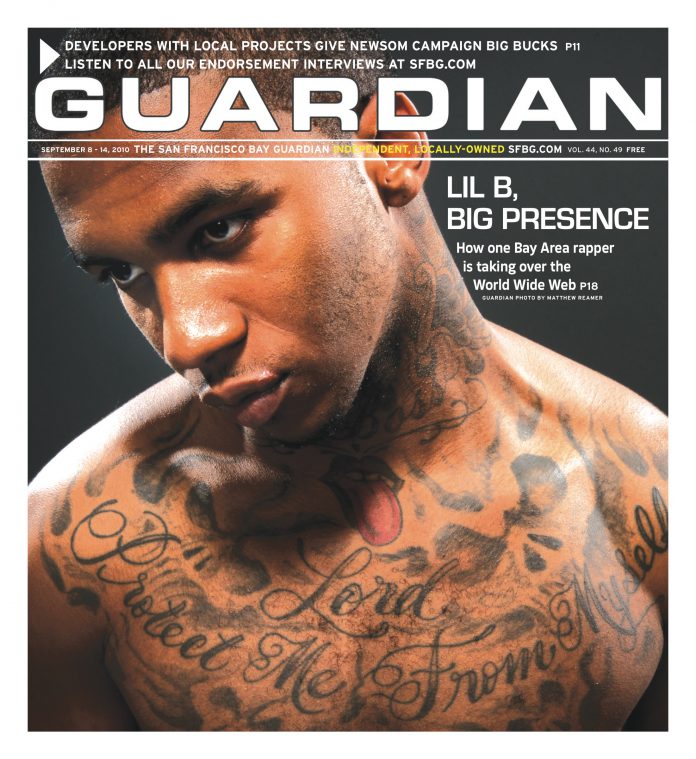Don’t ask synthesizer inventor and electronic instrument designer Don Buchla (appearing Thu/9 as part of the 11th Annual San Francisco Electronic Music Festival) for a CD of his music. He’s more interested in following his curious muse — in this case, through the oft-uncharted territory of performance — than documenting his many experiments.
“It’s hard to have a CD that hasn’t been done yet,” the soft-spoken, even-keeled Buchla quips, deep within his Berkeley Victorian. He’s tucked behind a desk in a beige-carpeted, orderly studio-basement dotted with instruments — a hulking vibraphone dominates the space — and a few rainbow-colored 1960s- and ’70s-era lights. “None of my music can be recorded,” he adds. “It’s all theatrical in nature and involves a lot of visual simulations — stimulations.”
Buchla’s last performances were with saxophonist Peter Apfelbaum in Europe. His next appearance, a rare Bay Area one, will be in collaboration with Nine Inch Nails player Alessandro Cortini, for whom he made one of his Buchla Series 200e analog synthesizers. Using the 200e, a Thunder tactile surface MIDI controller, and various pieces of percussion, the two are making electronic and acoustic music with a distinct “element of chaos.” Buchla says they are striving for “unpredictability — allowing things to happen that we didn’t anticipate.”
In the meantime, forget about procuring a document of any of the practice sessions. Still, the inventor — who came out with his first modular synthesizer just months after Robert Moog in 1963 and created the first analog sequencer, among many other instruments — has made live CDs in the past. Indeed, his audiences would sometimes get a CD of the first half of a concert once the performance was completed and receive the second half in the mail. “If you want a record of the music,” he says, “the record should be the music you heard.”
If the live-recording-as-you-wait approach reminds you of the tape heads who devoted their energies to the Grateful Dead, you’re not far off: the Dead were onetime Buchla clients. He built their sound system — as well as the system on Ken Kesey’s bus — around the time he was doing sound and light at the Avalon Ballroom and the first Fillmore auditorium, as part of the North American Ibis Alchemical Company. Owsley Stanley, the Dead’s soundman and the onetime LSD cook, enlisted Buchla to make a Series 100 system for the band. “He wanted it to be very unique, so I painted all the panels candy-apple red,” Buchla remembers with a chuckle. “It was quite dazzling. It’s in their museum now, a collector’s item.”
Buchla’s instruments have all become collector’s items, from his Series 500, the first digitally controlled analog synth, to his all-in-one-paintbox Music Easel. “I usually can’t afford to keep them myself,” he says, laughing. “If I had, I’d be wealthy now.”
The first synthesizer that Buchla built in 1963 for composers Morton Subotnick and Ramon Sender at the San Francisco Tape Music Center was the fruit — the silver apple — of the UC Berkeley physics graduate drop-out and musique concrete composer’s roving curiosity. He’d learned that the Center had a three-track tape recorder, a marvel anywhere outside film studio contexts at the time. “I observed what they were using to compose electronic music,” Buchla remembers. “I proposed that instead of using the radar and gun sights and physics lab equipment and Hewlett-Packard oscillator, they build instruments intentionally geared toward electronic music. That was a revolutionary thought.”
In the 1984 book The Art of Electronic Music, Subotnick tells Jim Aikin that Buchla synthesizers are notable for “the way things are designed and laid out, so that a composer can impose his or her own personality on the mechanism. For example, Don always disassociated a voltage controlled amplifier from its control voltage source. That meant that the voltage source could be used for controlling anything. It wasn’t locked into a single use … That kind of sophistication has given him [a reputation] as the most interesting of all the people building this kind of equipment.”
The first Buchla Box, using touch-sensitive pads or ports rather than a standard keyboard, was funded with a $500 grant from the Rockefeller Foundation. Today it’s permanently ensconced at Mills College. On a side note, Buchla estimates it would easily go for $30,000. Buchla still tackles new designs — he has a multichannel filter that can serve as a Vocoder coming out next month — and his instruments, it seems, “don’t depreciate at all, so they’re good investments.”
“But I prefer to build them for playing.”
11TH SAN FRANCISCO ELECTRONIC MUSIC FESTIVAL
Wed/8–Sat/11, various times, $10–$40 (pass)
(Alessandro Corti and Don Buchla perform Thurs/9, 8 p.m., $10–$16)
Brava Theatre (except Fri/10 at de Young Museum)
2781 24th St, SF
(415) 861-3257

